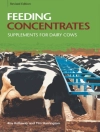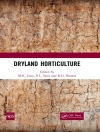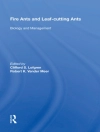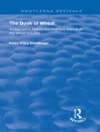Crop protection continues to be an important component of modern farming to maintain food production to feed an expanding human population, but considerable changes have occurred in the regulation of pesticides in Europe in the last decade. The aim has been to reduce their impact on people and the environment. This has resulted in a major reduction in the number of chemicals approved for application on crops. In other parts of the world, a continuing expansion in the growing of genetically modified crops has also changed the pattern of pesticide use.
In this second edition, Graham Matthews, updates how pesticides are registered and applied and the techniques used to mitigate their effects in the environment. Information on operator safety, protection of workers in crops treated with pesticides and spray drift affecting those who live in farming areas is also discussed.
By bringing together the most recent research on pesticides in a single volume, this book provides a vital up to date resource for agricultural scientists, agronomists, plant scientists, plant pathologists, entomologists, environmental scientists, public health personnel, toxicologists and others working in the agrochemical industry and governments. It should assist development of improvements in harmonising regulation of pesticides in countries with limited resources for registration of pesticides.
İçerik tablosu
Preface to the first edition vii
Preface to second edition ix
Acknowledgements x
1 Pesticides and agricultural development 1
Principal pesticides 5
Insecticides 6
Herbicides 9
Fungicides 11
Rodenticides 12
Crop distribution 12
Major crops 13
2 Approval of pesticides 33
Retrospective assessment 43
Environmental aspects 44
Endocrine disrupters 48
Approval in relation to efficacy 49
Operator proficiency 50
Storage and waste management 51
3 Application of pesticides 57
Hydraulic sprayers 57
Hydraulic nozzles 65
Sprayer testing 73
Rotary atomisers 73
Compression sprayers 75
Knapsack sprayers 77
Home and garden use 80
Weed wipers 80
Space treatment equipment 81
Granule application 84
Seed treatment 85
Storage of pesticides and equipment 86
Timing and number of spray applications 87
4 Operator exposure 92
Methodology of measuring exposure 102
Exposure of hands 107
Inhalation exposure 108
Biomonitoring 110
First aid 112
Periods of exposure 114
5 Spray drift, bystander, resident and worker exposure 129
What is drift? 131
How is drift measured? 132
Bystander exposure 137
Residential exposure 143
Worker exposure 150
6 Environmental aspects of spray drift 159
Protecting water 159
Protecting vegetation 174
Overall environmental impact assessments 184
Pesticide misuse affecting wildlife 190
7 Residues in food 201
8 The future of pesticides 225
Weed management 227
Disease management 229
Insect management 229
IPM 232
Traditional plant breeding 234
Present day pesticides 236
Herbicides 236
Fungicides 236
Insecticides 237
Other insecticides 239
Biopesticides 240
More selective applications 242
Pheromones 243
GM crops 244
Perceptions and hopes for the future 246
Appendix 1 – Standard terms and abbreviations 253
Appendix 2 – Checklist of important actions for pesticide users 264
Index 266
Yazar hakkında
Graham Matthews is Emeritus Professor at the Department of Biosciences, Imperial College, UK, and is one of the world’s foremost authorities on pesticides.












